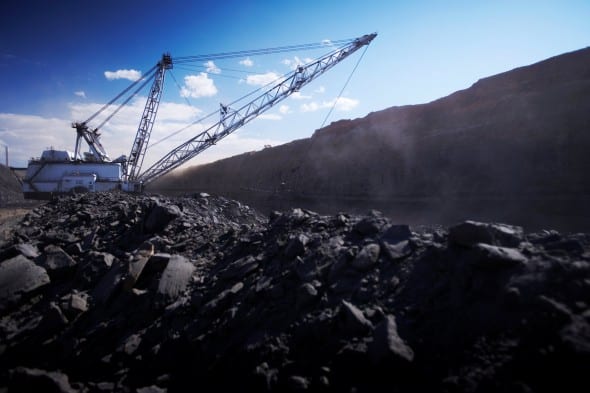BHP’s slow exit from the ailing thermal coal market looked more certain than ever on Thursday when the mining giant announced a $US1.6 billion write-down of the value of coal mines in New South Wales and Venezuela.
The write-down, a reflection of the world’s rapid turn away from the most carbon heavy fossil fuel, was a financial blip in an otherwise extremely lucrative six months for Australia’s most valuable company.
Soaring demand for its two main products, iron ore and copper, delivered a half-year profit of just over $US6 billion. The majority of those profits will be paid out to shareholders in dividends.
BHP insists it is taking the energy transition seriously, planning to abandon thermal coal altogether as it turns to what it calls “future facing commodities” like iron ore, copper and nickel. It says these commodities have bright futures in a low-carbon world as they play a central role in the manufacture of solar panels, wind turbines, and batteries.
“In a Paris-aligned, 1.5 degree scenario, we expect that investment in such things as copper-intensive solar generation, nickel-intensive batteries, and steel-intensive wind turbines will contribute to a more than doubling of the amount of primary copper and a quadrupling of the amount of primary nickel demand over the next 30 years, as was produced over the last 30,” CEO Mike Henry said on Tuesday.
The company has by and large managed to convince investors it is serious about becoming a net-zero company (it has set 2050 as the deadline), even though it continues to produce coking coal, oil and gas, and has no intention to pull back production of those.
As Henry bigged up the role of iron ore in zero-emissions steelmaking, he largely avoided the awkward question of how BHP’s iron ore would be made without coking coal. His main comment on that front was that the company’s “high quality” coking coal would be more attractive to steelmakers in a carbon-conscious world than lower quality, higher-emitting coal.
But even high quality coking coal has massive CO2 emissions and, therefore, will have to be phased out completely before 2050.
Green hydrogen, manufactured using renewably generated electricity, is pretty much the only plausible emissions-free alternative to coking coal in the steelmaking process, but Henry had little to say about that as he presented the results.
In accompanying material published on Tuesday, the company pointed out it had signed memorandums of understanding with Chinese steelmaker China Baowu and Japanese steelmaker JFE to explore technologies for low-carbon steelmaking. BHP has said it will invest “up to” $US35 million and $US15 million in each venture, respectively, over the next five years.
Dan Gocher, head of climate at activist investor group Australasian Centre for Corporate Responsibility – which has led high-profile shareholder resolutions at BHP annual general meetings – questioned why BHP wasn’t spending more on green steelmaking technology – something fellow iron ore producer Fortescue Metals is planning to do in a big way, albeit through a separate business venture headed up by chair Andrew Forrest.
“The profits from BHP’s iron ore business are pretty extraordinary,” Gocher said. “It would be good to see BHP allocate some of those returns to decarbonising steel production. BHP is still committed to spending billions on exploration and capex in its petroleum division, that dwarf what it is allocating to what it calls climate solutions, which is around $US400 million over the next five years.”
BHP continues to pump serious money into oil and gas production, including $US1.4 to $US1.9 into the Scarborough gas field it co-owns with Woodside. It says it will spend a total of $US1.1 billion developing petroleum projects in the 2021 full financial year.










